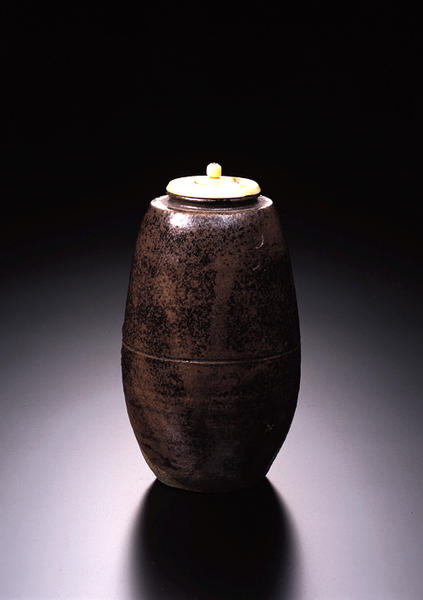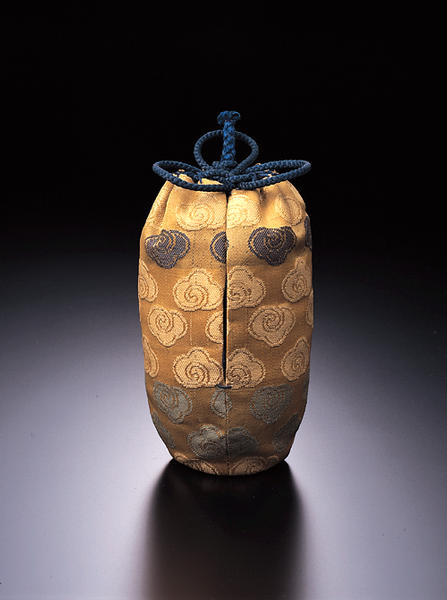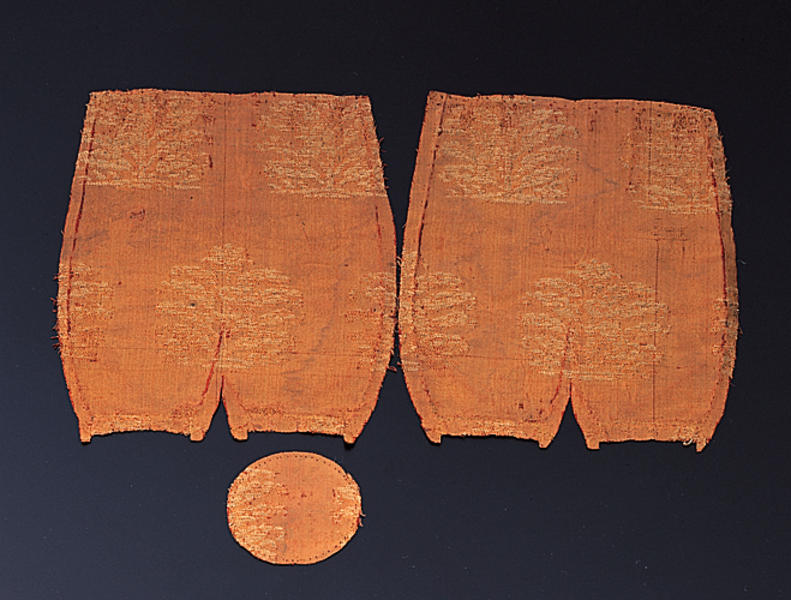Tea Container, known as IKOMA
- Seto kiln, Aichi pref.
- Momoyama period
- 16c
- Seto ware, Katatsuki type
- H-11.9 D-7
- Tokugawa Ieyasu,Ikoma,the Mitsuis,the Sakais
Catalogue Entry
Momoyama period, 16th century
Seto ware
Height, 11.9cm; mouth diameter, 3.9cm; torso diameter, 7.3cm; base diameter, 4.4cm
Tokugawa Ieyasu presented this tea container to Ikoma Ikinokami Masatoshi in 1612 (Keicho 17) upon the occasion of Sunpu. This provenance then led to its name "Ikoma katatsuki." Then, however, the Ikoma family had its lands confiscated in 1640 (Kan'ei 17) due to a family quarrel during the headship of Masatoshi's son Takatoshi. It was probably upon this occasion that this tea container left the Ikoma family, and it appears to have then entered the collection of Kurata Shichiroemon. In later years, the container was owned by Fuyuki Kiheiji and Mitsui Hachiroemon, and at the time of the publication of the Taisho Meikikan, this tea container was in the possession of the Sakai family of Wakasa. While in the Sakai collection, this tea container, along with the Terasawa Marutsubo and other objects, was entrusted in 1844 (Tempo 15) to the Tanimatsuya as surety for 1,500 ryo.
There are 3 Seto ware tea containers which are this large and have been dubbed the Oseto chaire, or large Seto tea containers, and this tea container is one of these 3 large works. Indeed, this is quite large for a Seto ware tea container, and its shape has also been formed into a regular shape. The shoulders are narrow, the mouth low, and the swelling torso is banded by a carved torso line, while its foot shows the remains of a well-arranged wire cut line. The glaze on this tea container is smooth, and some uneven patches of glaze give it a fine surface effect. While research on the dating of Seto tea containers has progressed in recent years, this work is particularly noteworthy for its prove-nance which dates back to the Keicho era. TA


